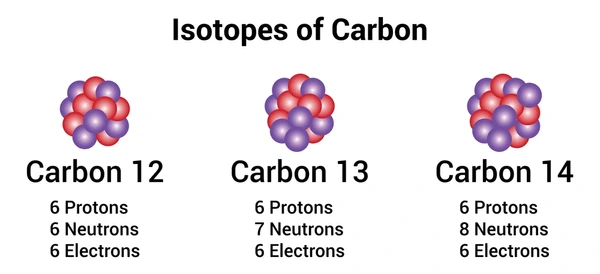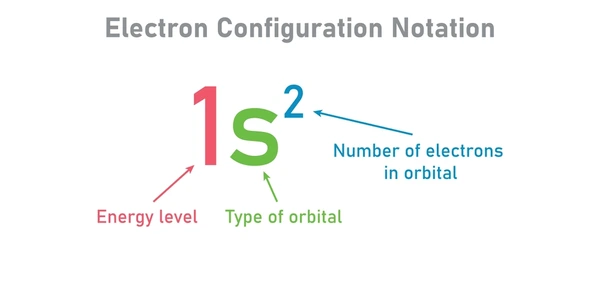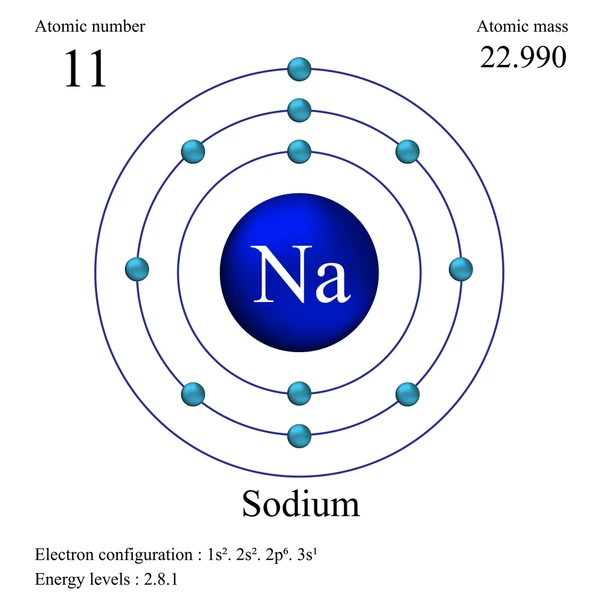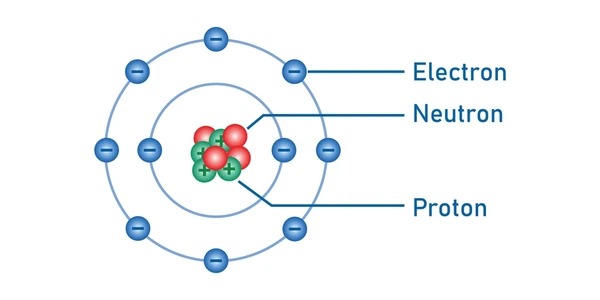Understanding atomic structure is fundamental to mastering chemistry, physics, and various scientific disciplines. In this comprehensive guide, we break down every essential component of nuclear structure from the tiniest subatomic particles to their behaviors and electronic configurations, helping you grasp the core principles that define the universe at the atomic level.
Introduction to Atomic Structure
Atomic structure describes how subatomic particles, protons, neutrons, and electrons are organized within an atom. As the fundamental building blocks of matter, atoms have structures that influence elements’ behavior, bonding, and reactivity.
The Subatomic Particles

Protons: The Positive Charge
- Charge: +1
- Relative Mass: 1
- Location: Nucleus
Protons are positively charged particles located within the nucleus of an atom. The atomic number, which characterizes a chemical element, is dictated by the quantity of protons present.
Neutrons: The Neutral Stabilizer
- Charge: 0
- Relative Mass: 1
- Location: Nucleus
Neutrons carry no charge but contribute to the mass of the atom. They help stabilize the nucleus by offsetting the repulsive forces between positively charged protons.
Electrons: The Negative Orbiters
- Charge: –1
- Relative Mass: 1/1836
- Location: Electron Shells/Orbitals
Electrons are lightweight, negatively charged particles that orbit the nucleus in specific energy levels or shells. Their arrangement is crucial in determining the chemical properties of an element.
Atomic Number and Mass Number
Atomic Number (Z)
The atomic number corresponds to the number of protons in an atom and is specific to each element. For instance, carbon possesses an atomic number of 6.
Mass Number (A)
The mass no. represents the total count of protons and neutrons present in the nucleus of an atom.
Mass no = Number of Protons + Number of Neutrons
Isotopes: Variants of Elements

Isotopes are variants of the same element that have identical no. of protons but differ in the number of neutrons.
- Example:
- Carbon-12 (6 protons, 6 neutrons)
- Carbon-13 (6 protons, 7 neutrons)
- Carbon-14 (6 protons, 8 neutrons)
Isotopes share the same chemical properties but differ in physical characteristics, such as stability and radioactivity.
Electron Configuration and Energy Levels
Electrons are distributed in energy levels or shells that surround the nucleus. The first shell can carry a maximum of 2 electrons, the second up to 8, the third up to 18, and so on, based on the 2n² rule.
Shell Capacities
- 1st Shell (K): 2 electrons
- 2nd Shell (L): 8 electrons
- 3rd Shell (M): 18 electrons
- 4th Shell (N): 32 electrons
Electron Configuration Notation

Electron configuration is written as the distribution of electrons in various shells. For example:
- Hydrogen (Z=1): 1
- Carbon (Z=6): 2, 4
- Neon (Z=10): 2, 8
This configuration determines valency, bonding behavior, and reactivity.
The Modern Atomic Model
The modern atomic model, also known as the quantum mechanical model, integrates quantum theory to describe electron behavior more accurately. Key points include:
- Electrons occupy orbitals, not fixed paths.
- Orbitals are regions where there is a high probability of finding an electron.
- Each orbital can carry a maximum of two electrons.
Types of orbitals:
- s-orbital: spherical (1 per energy level)
- p-orbital: dumbbell-shaped (3 per level from n=2)
- d- and f-orbitals: more complex shapes
Valence Electrons and Their Reactivity
Electrons are found in the outermost shell of an atom. They determine the atom’s chemical properties and its ability to form bonds.
- Chemical bonding (ionic, covalent)
- Reactivity of the atom
- Group number in the periodic table
For instance, Group 1 elements like sodium (Na) have 1 valence electron, making them highly reactive.
Ions and Atomic Structure
Atoms can either lose or gain electrons to become ions.
- Cations: Positively charged ions (loss of electrons)
- Anions: Negatively charged ions (gain of electrons)

Example:
- Na → Na⁺ + e⁻
- Cl + e⁻ → Cl⁻
Ion formation is critical in ionic bonding and electrical conductivity.
Atomic Structure and the Periodic Table
The Periodic Table is arranged based on atomic number and reflects trends in atomic structure:
- Groups (columns): Similar valence electrons
- Periods (rows): Increasing energy levels
- Blocks (s, p, d, f): Based on orbital filling
Periodic trends influenced by atomic structure:
- Atomic radius decreases across a period
- Ionization energy increases across a period
- Electronegativity increases across a period
Atomic Models Over Time
1. Dalton’s Model (1803)
- Atoms are indivisible and indestructible.
- Each element has its own type of atom.
2. Thomson’s Model (1897)
- Discovered the electron.
- Plum pudding model: electrons in a positively charged sphere.
3. Rutherford’s Model (1911)
- Nucleus discovery via the gold foil experiment.
- Most of the atoms are in space.
4. Bohr’s Model (1913)
- Electrons orbit in fixed shells.
- Explained emission spectra.
5. Quantum Mechanical Model (Modern)
- Electrons in probabilistic orbitals.
- Based on Schrödinger’s wave equations.
Importance of Understanding Atomic Structure
A deep understanding of atomic structure helps explain:
- Chemical bonding and reactions
- Material properties (hardness, conductivity)
- Radioactivity and nuclear processes
- Biological functions (DNA structure, proteins)
- Technological applications (semiconductors, nanotechnology)
Conclusion
The atomic structure forms the foundation of all physical sciences. It plays a critical role in explaining periodic trends and enhances our understanding of complex biochemical processes. Gaining insight into the roles and arrangements of protons, neutrons, and electrons is essential for anyone exploring the world of science. Mastering these concepts unlocks a deeper comprehension of the universe and the countless interactions that shape it.
What do you mean by atomic structure?
What Is Atomic Structure?
Atomic structure describes how subatomic particles protons, neutrons, and electrons are organized within an atom. As the fundamental building blocks of matter, atoms have structures that influence elements’ behavior, bonding, and reactivity.
The Subatomic Particles

Protons: The Positive Charge
Charge: +1
Relative Mass: 1
Location: Nucleus
Protons are positively charged particles located within the nucleus of an atom. The atomic number, which characterizes a chemical element, is dictated by the quantity of protons present.
Neutrons: The Neutral Stabilizer
Charge: 0
Relative Mass: 1
Location: Nucleus
Neutrons carry no charge but contribute to the mass of the atom. They help stabilize the nucleus by offsetting the repulsive forces between positively charged protons.
Electrons: The Negative Orbiters
Charge: –1
Relative Mass: 1/1836
Location: Electron Shells/Orbitals
Electrons are lightweight, negatively charged particles that orbit the nucleus in specific energy levels or shells. Their arrangement is crucial in determining the chemical properties of an element.
Atomic Number and Mass Number
Atomic Number (Z)
The atomic number corresponds to the number of protons in an atom and is specific to each element. For instance, carbon possesses an atomic number of 6.
Mass Number (A)
The mass no. represents the total count of protons and neutrons present in the nucleus of an atom.
Mass no. = Number of Protons + Number of Neutrons
Isotopes: Variants of Elements

Isotopes are variants of the same element that have identical n of protons but differ in the number of neutrons.
Example: Carbon-12 (6 protons, 6 neutrons)
Carbon-13 (6 protons, 7 neutrons)
Carbon-14 (6 protons, 8 neutrons)
Isotopes share the same chemical properties but differ in physical characteristics, such as stability and radioactivity.
Electron Configuration and Energy Levels
Electrons are distributed in energy levels or shells that surround the nucleus. The first shell can carry a maximum of 2 electrons, the second up to 8, the third up to 18, and so on, based on the 2n² rule.

Shell Capacities
1st Shell (K): 2 electrons
2nd Shell (L): 8 electrons
3rd Shell (M): 18 electrons
4th Shell (N): 32 electrons
Electron Configuration Notation
Electron configuration is written as the distribution of electrons in various shells. For example:
Hydrogen (Z=1): 1
Carbon (Z=6): 2, 4
Neon (Z=10): 2, 8
This configuration determines valency, bonding behavior, and reactivity.
The Modern Atomic Model
The modern atomic model, also known as the quantum mechanical model, integrates quantum theory to describe electron behavior more accurately. Key points include:
Electrons occupy orbitals, not fixed paths.
Orbitals are regions where there is a high probability of finding an electron.
Each orbital can carry a maximum of two electrons.
Types of orbitals:
s-orbital: spherical (1 per energy level)
p-orbital: dumbbell-shaped (3 per level from n=2)
d- and f-orbitals: more complex shapes
Valence Electrons and their Reactivity
Electrons are found in the outermost shell of an atom. They determine the atom’s chemical properties and its ability to form bonds.
Chemical bonding (ionic, covalent)
Reactivity of the atom
Group number in the periodic table
For instance, Group 1 elements like sodium (Na) have 1 valence electron, making them highly reactive.
Ions and Atomic Structure
Atoms can either lose or gain electrons to become ions.
Cations: Positively charged ions (loss of electrons)
Anions: Negatively charged ions (gain of electrons)

Example:
Na → Na⁺ + e⁻
Cl + e⁻ → Cl⁻
Ion formation is critical in ionic bonding and electrical conductivity.
Atomic Structure and the Periodic Table
The Periodic Table is arranged based on atomic number and reflects trends in atomic structure:
Groups (columns): Similar valence electrons
Periods (rows): Increasing energy levels
Blocks (s, p, d, f): Based on orbital filling
Periodic trends influenced by atomic structure:
Atomic radius decreases across a period
Ionization energy increases across a period
Electronegativity increases across a period
Atomic Models Over Time
1. Dalton’s Model (1803)
Atoms are indivisible and indestructible.
Each element has its type of atom.
2. Thomson’s Model (1897)
Discovered the electron.
Plum pudding model: electrons in a positively charged sphere.
3. Rutherford’s Model (1911)
Nucleus discovery via gold foil experiment.
Most of the atoms are in space.
4. Bohr’s Model (1913)
Electrons orbit in fixed shells.
Explained emission spectra.
5. Quantum Mechanical Model (Modern)
Electrons in probabilistic orbitals.
Based on Schrödinger’s wave equations.
Importance of Understanding Atomic Structure
A deep understanding of atomic structure helps explain:
Chemical bonding and reactions
Material properties (hardness, conductivity)
Radioactivity and nuclear processes
Biological functions (DNA structure, proteins)
Technological applications (semiconductors, nanotechnology)
Conclusion
The atomic structure forms the foundation of all physical sciences. It plays a critical role in explaining periodic trends and enhances our understanding of complex biochemical processes. Gaining insight into the roles and arrangements of protons, neutrons, and electrons is essential for anyone exploring the world of science. Mastering these concepts unlocks a deeper comprehension of the universe and the countless interactions that shape it.
What are the 5 atomic models proposed through time?
1. Dalton’s Model (1803)
Atoms are indivisible and indestructible.
Each element has its type of atom.
2. Thomson’s Model (1897)
Discovered the electron.
Plum pudding model: electrons in a positively charged sphere.
3. Rutherford’s Model (1911)
Nucleus discovery via gold foil experiment.
Most of the atoms are in space.
4. Bohr’s Model (1913)
Electrons orbit in fixed shells.
Explained emission spectra.
5. Quantum Mechanical Model (Modern)
Electrons in probabilistic orbitals.
Based on Schrödinger’s wave equations.
What are the energy levels of the electron configuration?
Electrons are distributed in energy levels or shells that surround the nucleus. The first shell can carry a maximum of 2 electrons, the second up to 8, the third up to 18, and so on, based on the 2n² rule.
Shell Capacities
1st Shell (K): 2 electrons
2nd Shell (L): 8 electrons
3rd Shell (M): 18 electrons
4th Shell (N): 32 electrons
Electron Configuration Notation

Electron configuration is written as the distribution of electrons in various shells. For example:
Hydrogen (Z=1): 1
Carbon (Z=6): 2, 4
Neon (Z=10): 2, 8
This configuration determines valency, bonding behavior, and reactivity.
What are the 3 subatomic particles that are found?

Protons: The Positive Charge
Charge: +1
Relative Mass: 1
Location: Nucleus
Protons are positively charged particles located within the nucleus of an atom. The atomic number, which characterizes a chemical element, is dictated by the quantity of protons present.
Neutrons: The Neutral Stabilizer
Charge: 0
Relative Mass: 1
Location: Nucleus
Neutrons carry no charge but contribute to the mass of the atom. They help stabilize the nucleus by offsetting the repulsive forces between positively charged protons.
Electrons: The Negative Orbiters
Charge: –1
Relative Mass: 1/1836
Location: Electron Shells/Orbitals
Electrons are lightweight, negatively charged particles that orbit the nucleus in specific energy levels or shells. Their arrangement is crucial in determining the chemical properties of an element.
What is called atomic structure?
What Is Atomic Structure?
Atomic structure describes how subatomic particles protons, neutrons, and electrons are organized within an atom. As the fundamental building blocks of matter, atoms have structures that influence elements’ behavior, bonding, and reactivity.
The Subatomic Particles

Protons: The Positive Charge
Charge: +1
Relative Mass: 1
Location: Nucleus
Protons are positively charged particles located within the nucleus of an atom. The atomic number, which characterizes a chemical element, is dictated by the quantity of protons present.
Neutrons: The Neutral Stabilizer
Charge: 0
Relative Mass: 1
Location: Nucleus
Neutrons carry no charge but contribute to the mass of the atom. They help stabilize the nucleus by offsetting the repulsive forces between positively charged protons.
Electrons: The Negative Orbiters
Charge: –1
Relative Mass: 1/1836
Location: Electron Shells/Orbitals
Electrons are lightweight, negatively charged particles that orbit the nucleus in specific energy levels or shells. Their arrangement is crucial in determining the chemical properties of an element.
Atomic Number and Mass Number
Atomic Number (Z)
The atomic number corresponds to the number of protons in an atom and is specific to each element. For instance, carbon possesses an atomic number of 6.
Mass Number (A)
The mass no. represents the total count of protons and neutrons present in the nucleus of an atom.
Mass no. = Number of Protons + Number of Neutrons
Isotopes: Variants of Elements

Isotopes are variants of the same element that have identical n of protons but differ in the number of neutrons.
Example: Carbon-12 (6 protons, 6 neutrons)
Carbon-13 (6 protons, 7 neutrons)
Carbon-14 (6 protons, 8 neutrons)
Isotopes share the same chemical properties but differ in physical characteristics, such as stability and radioactivity.
Electron Configuration and Energy Levels
Electrons are distributed in energy levels or shells that surround the nucleus. The first shell can carry a maximum of 2 electrons, the second up to 8, the third up to 18, and so on, based on the 2n² rule.

Shell Capacities
1st Shell (K): 2 electrons
2nd Shell (L): 8 electrons
3rd Shell (M): 18 electrons
4th Shell (N): 32 electrons
Electron Configuration Notation
Electron configuration is written as the distribution of electrons in various shells. For example:
Hydrogen (Z=1): 1
Carbon (Z=6): 2, 4
Neon (Z=10): 2, 8
This configuration determines valency, bonding behavior, and reactivity.
The Modern Atomic Model
The modern atomic model, also known as the quantum mechanical model, integrates quantum theory to describe electron behavior more accurately. Key points include:
Electrons occupy orbitals, not fixed paths.
Orbitals are regions where there is a high probability of finding an electron.
Each orbital can carry a maximum of two electrons.
Types of orbitals:
s-orbital: spherical (1 per energy level)
p-orbital: dumbbell-shaped (3 per level from n=2)
d- and f-orbitals: more complex shapes
Valence Electrons and their Reactivity
Electrons are found in the outermost shell of an atom. They determine the atom’s chemical properties and its ability to form bonds.
Chemical bonding (ionic, covalent)
Reactivity of the atom
Group number in the periodic table
For instance, Group 1 elements like sodium (Na) have 1 valence electron, making them highly reactive.
Ions and Atomic Structure
Atoms can either lose or gain electrons to become ions.
Cations: Positively charged ions (loss of electrons)
Anions: Negatively charged ions (gain of electrons)

Example:
Na → Na⁺ + e⁻
Cl + e⁻ → Cl⁻
Ion formation is critical in ionic bonding and electrical conductivity.
Atomic Structure and the Periodic Table
The Periodic Table is arranged based on atomic number and reflects trends in atomic structure:
Groups (columns): Similar valence electrons
Periods (rows): Increasing energy levels
Blocks (s, p, d, f): Based on orbital filling
Periodic trends influenced by atomic structure:
Atomic radius decreases across a period
Ionization energy increases across a period
Electronegativity increases across a period
Atomic Models Over Time
1. Dalton’s Model (1803)
Atoms are indivisible and indestructible.
Each element has its type of atom.
2. Thomson’s Model (1897)
Discovered the electron.
Plum pudding model: electrons in a positively charged sphere.
3. Rutherford’s Model (1911)
Nucleus discovery via gold foil experiment.
Most of the atoms are in space.
4. Bohr’s Model (1913)
Electrons orbit in fixed shells.
Explained emission spectra.
5. Quantum Mechanical Model (Modern)
Electrons in probabilistic orbitals.
Based on Schrödinger’s wave equations.
Importance of Understanding Atomic Structure
A deep understanding of atomic structure helps explain:
Chemical bonding and reactions
Material properties (hardness, conductivity)
Radioactivity and nuclear processes
Biological functions (DNA structure, proteins)
Technological applications (semiconductors, nanotechnology)
Conclusion
The atomic structure forms the foundation of all physical sciences. It plays a critical role in explaining periodic trends and enhances our understanding of complex biochemical processes. Gaining insight into the roles and arrangements of protons, neutrons, and electrons is essential for anyone exploring the world of science. Mastering these concepts unlocks a deeper comprehension of the universe and the countless interactions that shape it.

1 thought on “Atomic structure”